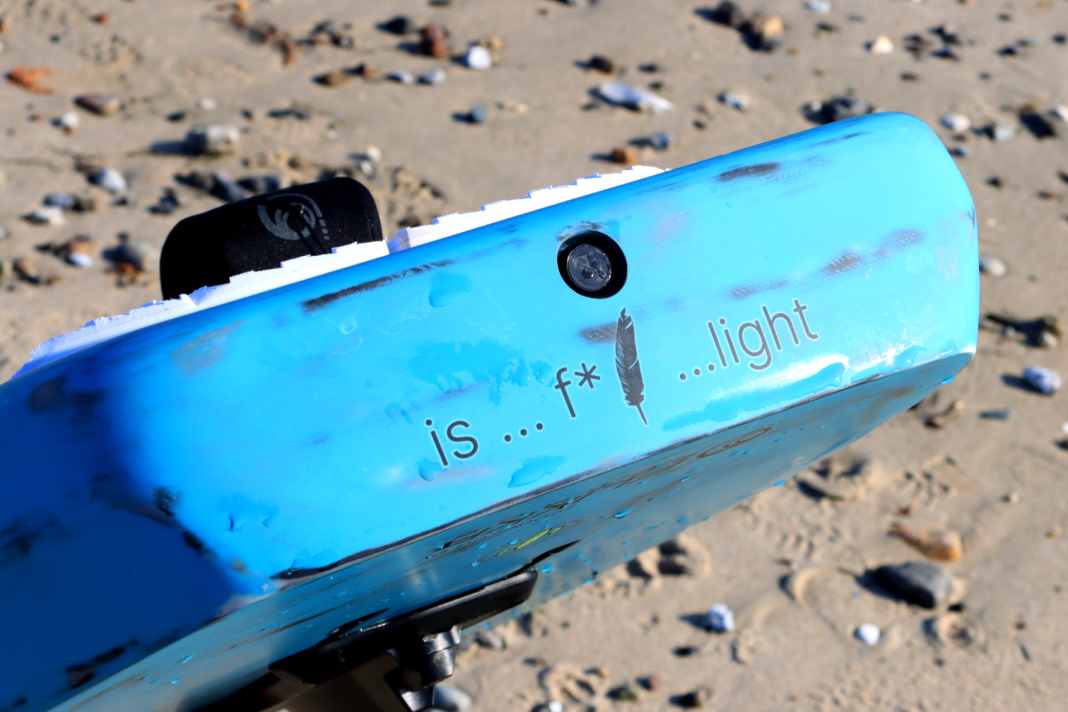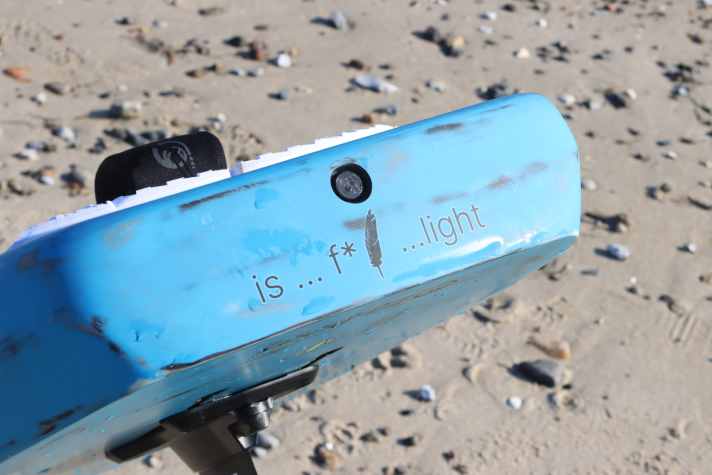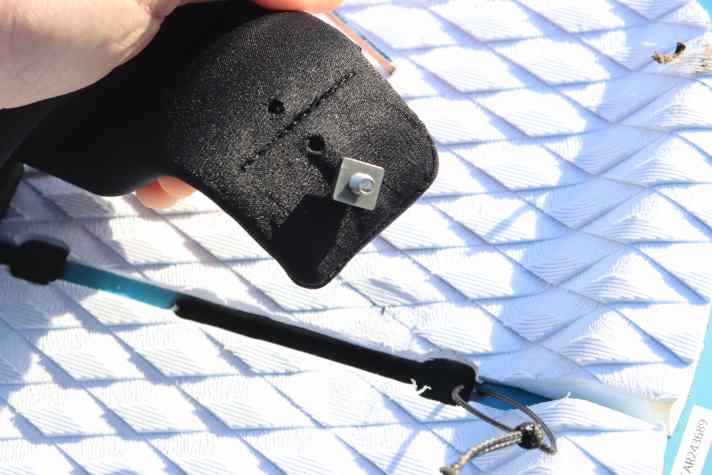





Light is right, This saying always applies to wingfoil boards - at least if you take the pure riding experience as a basis. A lightweight board simply feels more lively and comfortable underfoot. Depending on the construction and size, board weights usually vary between six and eight kilograms. Measured against this, the Swiss brand Airinside's promise of four-kilo boards naturally makes you sit up and take notice. The models are produced by the Slovenian partner company Flikka. We spoke to Markus Schüpbach from Airinside about the special features of the designs.
Markus, how does the structure of an Airinside Wingboard compare to a conventional board?
A conventional board has a foam core on the inside, onto which the individual layers are then laminated. Airinside boards are built using a negative construction method, are hollow on the inside and consist of two double sandwich half-shells that are baked in an autoclave oven at around 150 degrees Celsius and then glued together. Inside, the forces are stabilised with stringers. The shell consists of a double sandwich, PVC and honeycomb and prepreg carbon.
The boards weigh between 3.2 and 4.2 kilos. Nevertheless, you don't have to treat them like a raw egg
The Airinside idea is not new; there were already attempts to build windsurf boards with this technology in the 90s. All attempts back then failed due to the issue of durability.
That's true, but development is simply progressing all the time. Company founder Stefan Waelchli now has over 30 years of experience in this field and with Luka Jures, the shaper from our partner company Flikka, we have finally found a producer and business partner who brings a great deal of expertise to the table and has developed the concept to market maturity. We developed certain components such as adhesives and prepreg materials ourselves, and almost all raw materials come from the EU. There used to be problems with tightness, but this is no longer the case. The outer shell is absolutely tight, and there is a Goretex valve in the tail that equalises pressure differences caused by temperature fluctuations. And of course we had the technology extensively tested by professional foilers before we launched it on the market.
Do the boards need to be handled more carefully than conventional boards?
Depending on the size, the boards weigh between 3.2 and 4.2 kilos. You can treat them like any other board, the hull is just as stable. You can do the same things with them - cruising, riding waves and jumping within normal limits. Of the boards we have sold so far, not a single one has been the subject of a complaint. And our customers have included ambitious freestylers.

But what happens if a hole is created? Will the board then fill up like a leaking tanker?
Damage must and can be repaired in the same way as with normal boards, because otherwise more and more water will naturally penetrate. It is almost impossible for a board to fill completely with water, as all the air would have to be able to escape. Apart from that, the sandwich material generates enough buoyancy to make the board unsinkable with foil. However, there is a big difference if water penetrates due to damage: With conventional constructions, water penetrates the EPS foam core and stays there; it is almost impossible to get the water completely out again. With an Airinside board, you simply open the valve and let the water run out again. The structure of the board remains undamaged - that's the advantage.
Leaving the construction aside - what shape concept do you follow at Airinside? Who are your boards made for?
We have been testing prototypes for two years and have had them tested by pros and beginners alike. Our shapes are not extremely short, the aspect ratio results in a more parallel outline and a flat rocker, which supports early take-off without a lot of pumping. We bevelled the edges only moderately and the tear-off edge in the tail is sharp - all this is intended to reduce the riding resistance and enable an early take-off. In terms of volume distribution, we made sure that the board is nice and stable in the water. After standing up, you can immediately get into the straps and take off in a relaxed manner. For this reason, the target group is very broad and ranges from beginners to experienced foilers. We also use a special system for the foot straps.

What's it all about?
The footstraps are not screwed into a plastic plug, as is usually the case. Instead, the straps sit in a carbon fibre fin box with a small threaded plate. This means that the position and width of the straps can be adjusted to any foot shape with millimetre precision and, on top of that, no plugs can tear out.
How much do your models cost?
We currently have two board series in our portfolio - an all-rounder called Superfly and an even longer mid-length model called Superflow (Information and tests on mid-length boards can be found HERE, the editors). Depending on the size, these cost between 2000 and 2200 euros. Because we produce in the EU, the production price makes up 60 per cent of the sales price, which is of course much higher than for Asian products. This is good for the end customer because it is more sustainable and of higher quality. Foot straps are included and you can also choose the colour. A third board series called Supernova, which is positioned between the Superflys and the Superflows, is currently being developed. These boards will be available to order in the second half of the year. Initial information can be found at www.airinide.ch.
Markus, thank you for the interview!
You will soon be able to read a test of the Airinside Superfly 84 here on the website.

